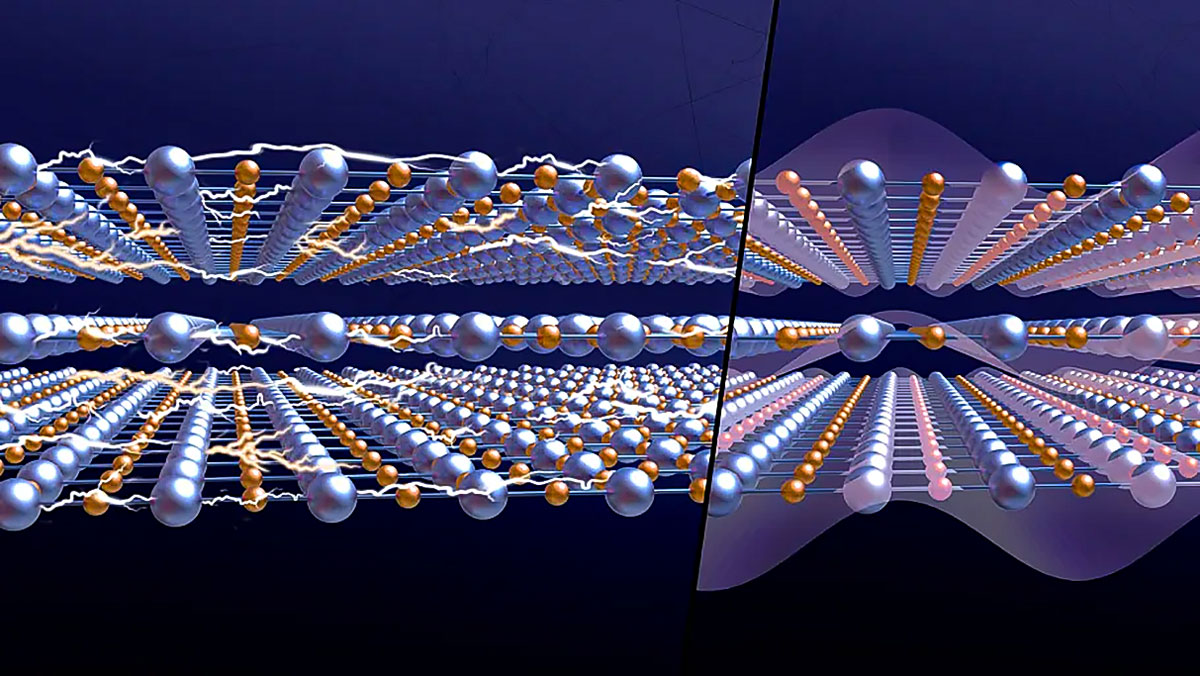New Discovery about Cuprates: Superconductors to Reduce World Electricity Bill
A new study, published in the prestigious Science magazine, reveals the unique behaviour of cuprates, superconductor materials composed of copper, oxygen, and other elements.
The results of this study by the researchers of the Politecnico di Milano, the Chalmers University of Gothenburg, the Università Sapienza di Roma and the Sincrotrone Europeo ESRF could bring about a revolution in electricity production and distribution systems, reducing energy costs.
Superconductors are materials inside which electric current travels, below a certain critical temperature, with no resistance and therefore without wasting energy. Cuprates have an important property: even at a higher temperature than the critical one, when they are in a ‘normal’ state and therefore do not display zero resistance, they behave in a non-conventional way. And in fact, this has led to them being known as ‘strange metals’. This strangeness lies in the fact that their resistivity increases in line with the temperature, something that does not usually occur for normal metals. The international study shows that, in the normal state, the presence of charge density waves modifies the ‘strange metal’ behaviour type of the cuprates and brings it more into line with that of normal metals. Understanding the microscopic origin of this strangeness of the normal state of cuprates is one of the main objectives of the current scientific research in this field.
Electric current travels without resistance inside superconductors kept at temperatures smaller than a critical value. In that, they are different from normal metals, where resistance entails the production of heat, and thus a waste of energy, whenever a current is flowing. Although known by more than a century, superconductivity remains one of the most fascinating and mysterious phenomena in the physics of solids. Since the initial discovery, the main objective has been the search for materials that are superconductor at ambient temperatures, so to enable they massive utilization. In that quest cuprates are special, because their critical temperature is less low than that of other known superconductors. Moreover, the reasons for this special behaviour are still unclear.
“This type of observation is very relevant because we have eventually found a correlation between a macroscopic property (resistivity in the normal state) and a microscopic one (charge density waves). This might be the long-sought key for theoreticians to formulate the explanation of such an unconventional behaviour of cuprate superconductors,” Prof. Giacomo Ghiringhelli, of the Politecnico di Milano explains.
“To fully understand the importance of this work, one has to consider that superconductivity is the most spectacular macroscopic manifestation, visible to the naked eye, of quantum physics, which is always needed to describe the phenomena at the atomic scale, but usually not at the macroscale. Superconductivity is a macroscopic quantum phenomenon. Now we know that even at relatively high temperatures, in their ‘normal’ state, cuprates show a quantum behaviour, for which we can talk of ‘ultra-quantum matter’,” he adds.
Abstract
The normal state of optimally doped cuprates is dominated by the ‘strange metal’ phase that shows a linear temperature (T) dependence of the resistivity persisting down to the lowest T. For underdoped cuprates, this behavior is lost below the pseudogap temperature T, where charge density waves (CDWs), together with other intertwined local orders, characterize the ground state. The authors found that the T-linear resistivity of highly strained, ultrathin, underdoped YBa2Cu3O7–δ films is restored when the CDW amplitude, detected by resonant inelastic x-ray scattering, is suppressed. This observation suggests an intimate connection between the onset of CDWs and the departure from T-linear resistivity in underdoped cuprates. This study results illustrate the potential of using strain control to manipulate the ground state of quantum materials.



